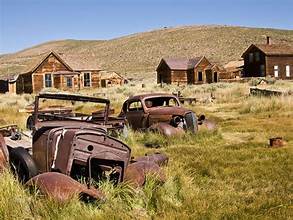
Urban exploration, often known as urbex, is an adventurous hobby that involves exploring abandoned or rarely seen parts of cities. However, as thrilling as it may be, it’s crucial to ensure that your explorations are legal and safe. In 2024, numerous cities offer intriguing urban exploration sites that are not only legal but also provide a captivating glimpse into urban history and architecture. This guide highlights top legal urban exploration sites to visit in 2024, ensuring a safe and memorable experience.
1. The High Line, New York City, USA
Overview: The High Line is a renowned urban park built on a historic freight rail line elevated above the streets on Manhattan’s West Side. It provides a unique perspective of New York City’s architecture and design.
Why Visit: This site offers a combination of lush greenery and urban views, making it an excellent destination for those interested in urban development and green spaces. The park features art installations, gardens, and panoramic city views.
Legal Considerations: The High Line is fully open to the public and managed by the Friends of the High Line organization. It is a legal and safe site for exploration, with regular hours of operation and security presence.
2. The Distillery District, Toronto, Canada
Overview: Located in Toronto, the Distillery District is a historic area known for its well-preserved Victorian-era buildings. It has been transformed into a cultural and arts hub.
Why Visit: This district offers a charming mix of galleries, boutiques, and eateries, housed in restored 19th-century distillery buildings. It’s an ideal location for those interested in historical architecture and modern art.
Legal Considerations: The Distillery District is a designated heritage site and is open to visitors year-round. It’s managed with an emphasis on preserving its historic integrity and provides a safe environment for urban explorers.
3. The Bowery Wall, New York City, USA
Overview: The Bowery Wall, located in Manhattan’s Bowery neighborhood, is famous for its ever-changing street art. This site features murals and graffiti by renowned and emerging artists.
Why Visit: It’s a dynamic urban art gallery with artwork that evolves frequently, making each visit a unique experience. This site offers insight into New York’s street art culture.
Legal Considerations: The Bowery Wall is a legal site for street art and is openly accessible to the public. It’s important to respect the artists and the space by observing from designated areas.
4. Tate Modern, London, UK
Overview: The Tate Modern is housed in a former power station on the South Bank of the River Thames. It’s one of the largest modern art galleries in the world.
Why Visit: The gallery is renowned for its contemporary art collections and exhibitions. The building itself, a converted industrial space, is a masterpiece of adaptive reuse.
Legal Considerations: As a major public museum, the Tate Modern is a fully legal exploration site. It offers regular hours and is accessible to visitors with a focus on art education and public engagement.
5. The Amsterdamse Bos, Amsterdam, Netherlands
Overview: The Amsterdamse Bos is a large park located on the outskirts of Amsterdam. It features a mix of forests, meadows, and waterways.
Why Visit: It’s an excellent spot for nature lovers and those interested in urban green spaces. The park offers various trails, recreational areas, and unique architectural features like the open-air theater.
Legal Considerations: The Amsterdamse Bos is a public park managed by the City of Amsterdam, ensuring it’s a safe and legal site for exploration. It is open to the public with various facilities for visitors.
6. The Catacombs of Paris, Paris, France
Overview: The Catacombs of Paris are a network of underground ossuaries that hold the remains of over six million people. They offer a unique glimpse into Paris’s history.
Why Visit: This site provides a historical and eerie experience, showcasing the intricate arrangements of bones and the history of Paris’s underground.
Legal Considerations: Access to the Catacombs is regulated and requires a ticket for entry. It is a legal site for exploration, with guided tours available to ensure safety and compliance with regulations.
7. Kowloon Walled City Park, Hong Kong
Overview: Kowloon Walled City Park is a historical park that preserves the remnants of the infamous Kowloon Walled City, once known for its high density and lawlessness.
Why Visit: The park offers a fascinating look at the history of the Walled City through its preserved structures and informative displays. It’s a historical site with significant urban transformation.
Legal Considerations: The park is maintained by the Hong Kong government and is open to the public. It provides a safe and legal environment for visitors interested in historical urban exploration.
8. Berlin’s East Side Gallery, Berlin, Germany
Overview: The East Side Gallery is a 1.3-kilometer stretch of the Berlin Wall that has been transformed into an open-air gallery with murals and artwork.
Why Visit: It’s a significant historical site and a vibrant art space, offering insight into the Berlin Wall’s history and its role in world history.
Legal Considerations: The East Side Gallery is a public site and a legal area for exploration. It’s maintained as a historical monument and art gallery, making it a safe and educational destination.
9. The Getty Center, Los Angeles, USA
Overview: The Getty Center is an art museum situated on a hilltop with stunning architecture and gardens. It offers extensive art collections and beautiful views of Los Angeles.
Why Visit: The Getty Center combines art, architecture, and landscape design. It’s a perfect destination for those interested in art and cultural heritage.
Legal Considerations: The Getty Center is a public institution with free admission. It is open to visitors and managed with a focus on preserving art and ensuring visitor safety.
10. Shibuya Crossing, Tokyo, Japan
Overview: Shibuya Crossing is one of the busiest pedestrian crossings in the world, known for its iconic scramble crossing and vibrant urban environment.
Why Visit: It offers a dynamic urban experience and is a great spot to observe the hustle and bustle of Tokyo’s city life.
Legal Considerations: As a public crossing, Shibuya Crossing is fully legal for visitors. It’s an active part of Tokyo’s cityscape and is safe for urban exploration during regular pedestrian traffic.
Tips for Safe Urban Exploration
- Research Before You Go: Always research the site thoroughly to understand its legal status and any safety guidelines.
- Respect Regulations: Adhere to rules and regulations set by site managers or local authorities to ensure a safe visit.
- Plan Your Visit: Check opening hours, required tickets, and any necessary permissions to avoid unexpected issues.
- Travel in Groups: Whenever possible, explore with others to enhance safety and share the experience.
- Be Prepared: Bring essentials such as a map, water, and appropriate clothing for the conditions of the site.
Conclusion
Urban exploration in 2024 offers a wealth of opportunities to discover hidden gems and historical sites while ensuring safety and legality. By visiting these top legal urban exploration sites, you can enjoy an exciting and informative adventure without compromising on legality or safety. Whether you’re interested in art, history, or unique urban spaces, these destinations provide a diverse array of experiences for the curious explorer.




